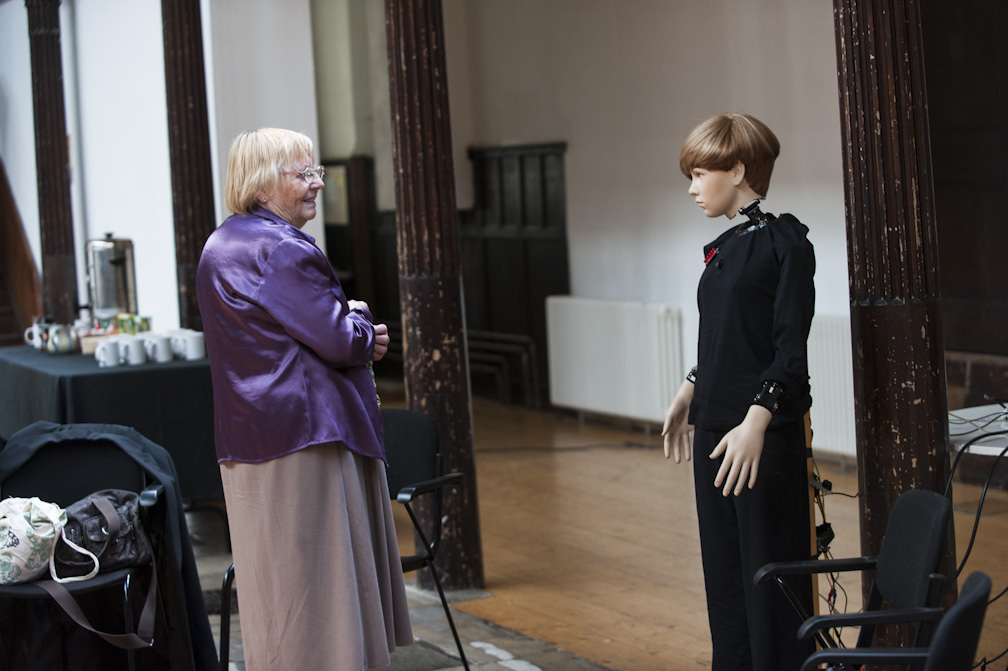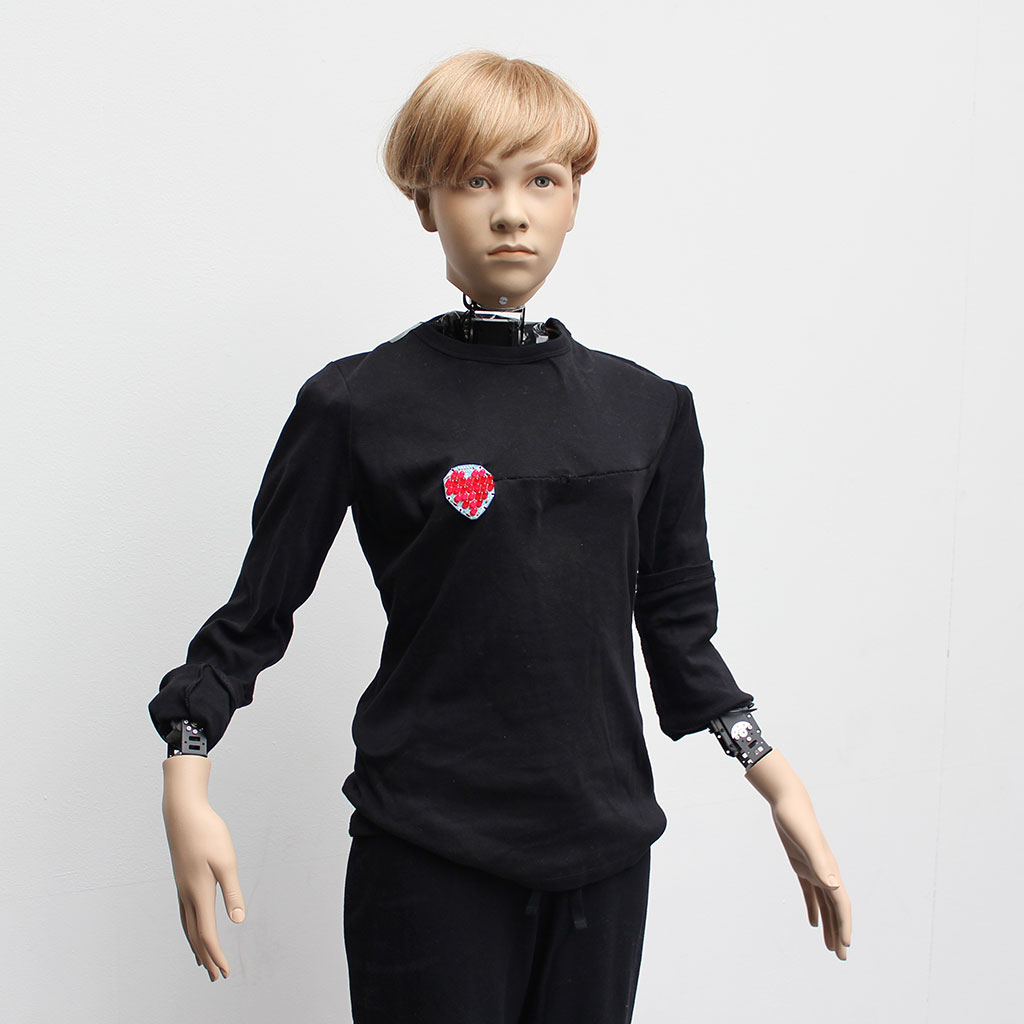HARR1 (Humanoid Art Research Robot 1) (2011-13) is Anna Dumitriu and Alex May’s robotic research platform. It was created in collaboration with Dr Michael L Waters and Professor Kerstin Dautenhahn in the Adaptive Systems Research Group at the University of Hertfordshire with funding from Arts Council England. The project explores the field of robotics and Artificial Intelligence and what it means for society.
The work aims to enable audiences to experience what it is like to be close to a robot and to have that robot behave in unexpected ways, for instance displaying boredom or exhibiting body language.

The piece aims to create discussion and debate around the future and potential uses of robotics and through displaying the work in gallery settings, such as the V & A Museum in London, and Fabrica Gallery in Brighton. It enables visitors to engage with the issues through an aesthetic and ethical lens, rather than an engineering perspective.

The piece has also been exhibited at Quad Derby, The Royal Academy of Art in London (as part of the Ai Wei Wei events series, Bletchley Park, The Intel Superhuman Academy at Ravensbourne in London, Phoenix Leicester, NESTA headquarters and at NESTA FutureFest 2015 in London.
HARR1 has received broad media coverage including appearances on BBC News Talking Business, BBC Global World News, BBC Arab Service and BBC Click.

Familiar
The “Familiar” head (exhibited on the HARR1 body) uses a depth camera to take features from visitors faces and combining them with features from their friends and family’s faces based on their proximity to the robot. It looks most like the person that it sees most, in order to promote bonding. As you approach, it turns to you and begins to change. The robot tells you “I like your face” or “I love you”. Of course this can also lead to a feeling of discomfort known in robotics as “the uncanny valley” (Mori, 1970), where users feel a sense of repulsion as robots become very humanlike (in this case very like themselves and their companions) but stopping short of being wholly human. The depth camera in the Kinect can be used to measure this effect in operation by recording how visitors approach the robot.

My Robot Companion” was originally commissioned by The Science Gallery Dublin as part of their exhibition “HUMAN + the future of the species” the piece originally used the CHARLEY robot body built by Dr Michael L Walters at The University of Hertfordshire and also comprised a series of speculative robot heads. The project was co-commissioned by The University of Hertfordshire . It was also exhibited as part of “Intuition and Ingenuity” at Lighthouse Gallery in Brighton as part of the Alan Turing Centenary commemorations.
